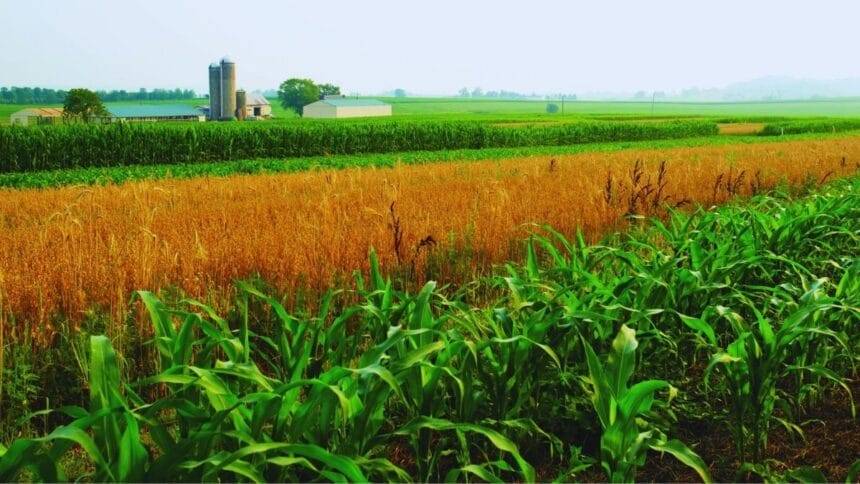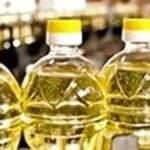Main Points In Hindi (मुख्य बातें – हिंदी में)
यहाँ विद्यमान पाठ से मुख्य बिंदुओं को हिंदी में प्रस्तुत किया गया है:
- पशुपालन में फसल: पशुपालन हमारे किसानों के लिए एक बेहतर आय का स्रोत है, लेकिन उन्हें पूरे वर्ष चारे की व्यवस्था करना एक बड़ी चुनौती है। हरे चारे का पोषण के लिए महत्वपूर्ण होने के कारण, फसलों का एक साथ उगाना एक समाधान हो सकता है।
- फसलों की मिश्रित खेती: किसान ज्वार, मक्का, बाजरा, उरद और ग्वार जैसी फसलों को एक ही खेत में 2:1 के अनुपात में बो कर बड़े पैमाने पर चारा उगाने का प्रयास कर सकते हैं। इससे पौष्टिक और अच्छा हरा चारा प्राप्त होता है।
- बुवाई की विधि और समय: हरे चारे की बुवाई का कोई सीजन नहीं है; किसान इसे किसी भी मौसम में बो सकते हैं। ड्रिल मशीन का उपयोग करके, 20-25 सेंटीमीटर के बीच पंक्तियों में बीज बोने से अधिक मात्रा में चारा मिलता है।
- खाद का उपयोग: फसल बोने से पहले खेत में 50 किलोग्राम नाइट्रोजन, 30 किलोग्राम फास्फोरस और 30 किलोग्राम पोटाश मिलाना चाहिए। बुवाई के एक महीने बाद, खड़ी फसल के बीच में अतिरिक्त नाइट्रोजन दिया जाना चाहिए।
- हरे चारे के लाभ: हरा चारा विभिन्न पोषक तत्वों का समृद्ध स्रोत है, जो पशुओं के स्वास्थ्य में सुधार करता है, जैसे कि रोगों से सुरक्षा, विटामिन A की आपूर्ति, दूध की मात्रा में वृद्धि, और पशुओं की प्रजनन क्षमता में सुधार।
Main Points In English(मुख्य बातें – अंग्रेज़ी में)
Here are 4 main points summarizing the provided content:
- Animal Husbandry as an Income Source: Animal husbandry is highlighted as a more profitable income source for farmers compared to traditional farming, but it poses challenges, particularly in sourcing sufficient fodder throughout the year.
- Cultivating Mixed Fodder: Farmers can effectively address fodder shortages by cultivating jowar, maize, millet, cowpea, and guar in the same field using a specific sowing ratio of 2:1. This mixed cropping results in higher nutritional quality and quantity of green fodder for livestock.
- Optimal Cultivation Practices: The best practices for cultivating fodder include sowing at any season with a seed requirement of about 20-25 kg per hectare using a seed drill method and proper fertilization before and after sowing to enhance crop yield.
- Benefits of Green Fodder: Green fodder is rich in essential nutrients, including carbohydrates, proteins, vitamins, and minerals. It boosts animal health by improving immunity, digestion, skin quality, and milk production, as well as enhancing reproductive capabilities in breeding livestock.
Complete News In Hindi(पूरी खबर – हिंदी में)
कृषि के साथ-साथ, पशुपालन देश के किसानों के लिए एक अच्छा आय का स्रोत है। लेकिन पशुपालकों के सामने सबसे बड़ी चुनौती पूरे साल चारा उपलब्ध कराना है, क्योंकि जानवरों को हरे चारे खिलाना उनके अच्छे पोषण के लिए बहुत महत्वपूर्ण है। इस समस्या का समाधान अब किसानों ने खोज लिया है। वास्तव में, किसान अब अपने खेतों में ज्वार, मक्का, बाजरा, जवारी और guar की फसल उगाकर हरे चारे की कमी को दूर कर सकते हैं। इन फसलों का चारा जानवरों के लिए बहुत लाभकारी है। आइए जानते हैं कि किसान इन पांचों चारे की फसल को एक साथ कैसे उगा सकते हैं और हरे चारे के क्या फायदे हैं।
एक ही खेत में चारा उगाएं
अगर पशुपालक चारे की अधिक मात्रा में फसल उगाना चाहते हैं, तो वे अपने खेतों में ज्वार, मक्का, बाजरा, जवारी और guar को एक साथ उगा सकते हैं। इसके लिए किसानों को इन फसलों को 2:1 के अनुपात में बोना चाहिए। इन सभी को एक साथ बोने से अधिक पोषक और गुणकारी हरा चारा मिलता है।
इस तरीके से उगाएं हरा चारा
हरे चारे की फसल के लिए बोने का सबसे अच्छा समय किसी भी मौसम में हो सकता है। अगर फसल को जल्दी या देर से बोया जाए, तो भी अच्छी उपज मिलती है। इसके लिए लगभग 20-25 किलो बीज प्रति हेक्टेयर की आवश्यकता होती है। बीज बोने का सही तरीका सीड ड्रिल है। इसमें, बीजों को 20-25 सेंटीमीटर की दूरी पर पंक्तियों में बोना चाहिए। इस विधि से खेती करने पर किसानों को चारे की अधिक मात्रा मिलती है।
खेत को तैयार करने के लिए इस खाद का प्रयोग करें
चारा बोने से पहले, प्रति हेक्टेयर 50 किलो नाइट्रोजन, 30 किलो फास्फोरस और 30 किलो पोटाश खेत में डालना चाहिए। बोने के एक महीने बाद, खड़ी फसल के बीच में 30 किलो नाइट्रोजन छिड़कें। पानी कम मिलने वाले क्षेत्रों में, अगर बोने के 30-35 दिन बाद बारिश होती है, तो प्रति हेक्टेकर नाइट्रोजन 20-30 किलो के दर से डालें।
हरे चारे के क्या फायदे हैं जानें
1. हरे चारे में कार्बोहाइड्रेट, प्रोटीन, विटामिन और खनिज लवण जैसे कई विभिन्न पोषक तत्व प्रचुर मात्रा में होते हैं।
2. प्रोटीन जानवरों को विभिन्न प्रकार की बीमारियों से बचाता है।
3. हरे चारे में carotene की प्रचुरता होती है, जो विटामिन A का एक रूप है, जो जानवरों में अंधेपन से राहत देती है।
4. जानवरों को हरा चारा खिलाने से उनका रक्त संचार बढ़ता है।
5. हरा चारा स्वादिष्ट और पचने योग्य होता है, जिससे जानवरों की पाचन क्षमता बढ़ती है।
6. हरे चारे को खिलाने से जानवरों की त्वचा मुलायम और चिकनी हो जाती है।
7. दूध देने वाले जानवरों को हरा चारा देने से दूध की मात्रा बढ़ती है।
8. हरा चारा देने से जानवर समय पर मादा आते हैं और उनकी गर्भधारण की क्षमता बढ़ती है।
Complete News In English(पूरी खबर – अंग्रेज़ी में)
Apart from farming, animal husbandry is a better source of income for the farmers of the country. But the biggest challenge for animal husbandry farmers is to arrange fodder throughout the year, because feeding green fodder is very important for good nutrition of animals. In such a situation, the solution to this problem of cattle herders has also been found. In fact, farmers can now overcome the shortage of green fodder by cultivating jowar, maize, millet, cowpea and guar in the same field. The fodder of all these crops is very beneficial for animals. In such a situation, let us know how farmers can cultivate these five fodder together and what are the benefits of green fodder.
Cultivate fodder in the same field
If cattle rearers want to cultivate fodder in large quantities, they can grow jowar, maize, bajra, cowpea and guar in the same field. For this, farmers should sow these fodder in their fields in the ratio of 2:1. Sowing these five together gives more nutritious and good green fodder.
Cultivate green fodder with this method
Talking about the best time to sow this green fodder, farmers can cultivate it in any season. Good yield of fodder is obtained even if this crop is sown early or late. At the same time, about 20-25 kg hectare seeds are required for their cultivation. The correct way to sow it is seed drill. In this, the seeds should be sown in rows at 20-25 cm. By farming with this method, farmers get more quantity of fodder.
Use this fertilizer to prepare the field
Before sowing fodder, 50 kg nitrogen, 30 kg phosphorus and 30 kg potash should be applied in the field per hectare. One month after sowing, 30 kg nitrogen should be sprinkled between the rows in the standing crop. In areas with less irrigation, nitrogen should be applied at the rate of 20-30 kg per hectare when it rains 30-35 days after sowing.
Know what are the benefits of green fodder
1. Many different nutrients like carbohydrates, proteins, vitamins and mineral salts are found in abundance in green fodder.
2. Protein protects animals from different types of diseases.
3. Carotene is found in abundance in green fodder, which is a form of Vitamin A which provides relief from blindness in animals.
4. Feeding green fodder to animals increases the blood circulation of animals.
5. Green fodder is tasty as well as digestible, which increases the digestibility of animals.
6. By feeding green fodder the skin of animals becomes soft and smooth.
7. Feeding green fodder increases the quantity of milk in milking animals.
8. By feeding green fodder, animals start coming into heat on time and their ability to conceive increases.








